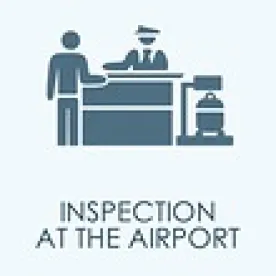The U.S. Citizenship and Immigration Service (USCIS) and the U.S. Department of State (USDOS) are frequently perceived to be the gatekeepers of the U.S. immigration system.
However, it is a third, largely independent agency— U.S. Customs and Border Protection —that is the most frequently encountered face and arbiter of U.S. immigration.
All travelers to the United States, including United States citizens, permanent residents, and nonimmigrants (temporary visa holders), are “inspected” by a U.S. Customs and Border Protection (CBP) officer upon entry to an airport or land border admission point. Documentation requirements are simpler for United States citizens and permanent residents.
The CBP inspection process is as follows:
-
Travelers will complete a Customs Declaration Form, which is usually distributed on the airplane. A sample can be found online at https://www.cbp.gov/travel/us-citizens/sample-declaration-form.
-
Travelers will be addressed by a CBP officer, who will:
-
Obtain a verbal declaration of citizenship;
-
Take physical custody of travel documents and request additional documentation if there are any discrepancies or questions, in order to check for fraud;
-
Look directly at each traveler on the document and compare the information in the document with the traveler, requesting additional documentation if there are any
discrepancies or questions; -
Ask questions to verify travelers’ identities and their reasons for coming to the U.S., listening to their answers and asking any relevant follow-up questions. He/she will
also obtain a binding declaration of all goods and currency entering the U.S.; -
Observe travelers’ body language, in order to look for deception;
-
Make computer system queries, including confirming the accuracy of readings and information input into the system;
-
Obtain a clear view of travelers, bags, luggage compartments, etc. He/she is permitted to search all travelers and their belongings, including bags, cell phones, laptops, etc.;
-
Analyze the whole inspection process and require the traveler to continue to a “secondary inspection,” if necessary.
-
CBP inspects all family members together. Non-family members accompanying the travelers are inspected separately. For more information about CBP, see https://www.cbp.gov/about.



 />i
/>i

